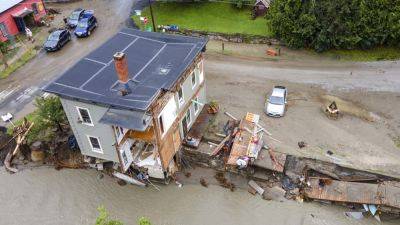EPA says Vermont fails to comply with Clean Water Act through inadequate regulation of some farms
Flaws in a Vermont program are preventing the state from controlling phosphorus discharges from certain farms, contributing to severe water quality problems in Lake Champlain and other bodies of water, according to a letter from the U.S. Environmental Protection Agency to state officials.
The Monday letter to the secretary of the Vermont Natural Resources Agency says the program is failing to comply with the Clean Water Act. It directs the state to make significant changes in how it regulates water pollution from concentrated animal feeding operations, or CAFOs, which raise animals in confinement.
There are 37 large and 104 medium CAFOs in Vermont, along with 1,000 small farms that might be considered such operations, according to the EPA.
Two state agencies — Natural Resources and Agriculture Food and Markets — regulate agricultural water pollution in Vermont, which is where the problem lies, the letter states. The division of responsibilities “is interfering with the regulation of Vermont’s CAFOs and preventing Vermont from adequately addressing agricultural water quality,” wrote David Cash, EPA administrator for Region 1 in Boston.
Excess phosphorus runoff from farms, roads and urban areas has fueled toxic algae blooms Lake Champlain, sometimes forcing the closure of beaches. Sources of excess phosphorus into lakes and waterways include fertilizers, leaking septic systems or discharges from wastewater treatment plants, according to the EPA.
<bsp-list-loadmore data-module="" class=«PageListStandardB» data-gtm-region=«RELATED COVERAGE» data-gtm-topic=«No Value» data-show-loadmore=«true»






